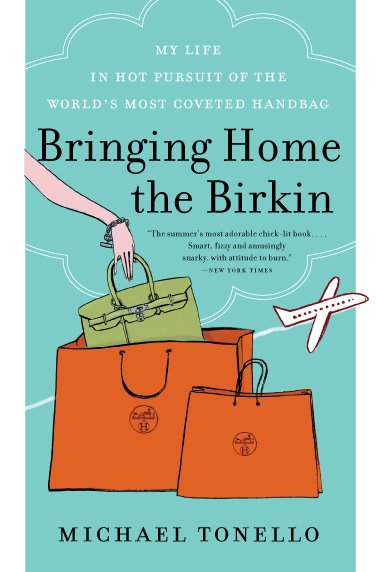Kya deLongchamps takes a wander through the silken, society of the Hermès scarf.

In the 1950s, the classical and equestrian iconography on a Hermès of Paris scarf spoke of an impossibly glamorous life.In winter one was pelted in impeccable couture in Paris, London or New York.
In summer, drinking gem-coloured cocktails with an elite tribe in the Cote d’Azur — the Hermès rolled, could keep the sun off the décolletage.
It was a brand you could hang onto, when all around you life was changing.

If the country seat was given up in death duties, the Baron von Tweeden-Pants dropped you for a starlet or you simply lost your looks — a Hermès scarf knotted elegantly under a gentrified chin (even in tatters) said something. You belonged — you were quality and knew what quality was.
Hunting, shooting, fishing, sparking elbows with royalty — and confidently staring down the under-classes — it was at one time all implied in a 36x36-inch square of exquisite silk jacquard.
Today, every Hermès scarf is still handmade and screen printed. It’s a luxurious, artisan product seamlessly connected with the world of high fashion and celebrity. It’s not too expensive darling — you simply cannot afford one!
Exclusivity, privilege — this is what real luxury is really all about. Since 1880 the headquarters of Hermès has been at 24, rue du Faubourg Saint-Honoré in Paris.

The Hermès family got their start in 1837 in harness making under Thierry Hermès, an immigrant of French/German descent.
Its superb leather work garnered top commissions including the supply of saddles, tack and accessories to Napoleon III and the Russian czars. Hermès is known to have made a golf jacket for Edward, the Prince of Wales with a specialised zip that wowed the trade.
Under Thierry’s grandsons Adolphe and Émile-Maurice, the company entered the unchartered waters of retail.
By the 1930s that essential connection with aristocracy had imprinted its name on the collective desires of society, and Hermes had digressed into watches with movements from Geneva, bags, country clothing, ladies wear for country pursuits, ties and carrés (scarves).

The very first Hermès scarf appeared in 1937 and featured a group of ladies playing a parlour game, ‘Jeu des Omnibus et Dames blanches’, designed in-house by Robert Dumas a member of the Hermès dynasty.
The recognition of the branding was crucial from an early stage — the Duc carriage drawn by a hackney horse and the wrapping — that flat, orange box used for the scarves.
The idea for scarves may have come from the equestrian roots of the company, as the material was, and still is, used for searingly bright jockey’s silks and was also used for its thermal properties to line riding jackets of every kind. Silk is not only 100% natural, but for its light weight, texture, warmth and cachet, is unmatched by any synthetic fibre.

The scarf adds a perfect dash of personable colour to any outfit, and has the added practicality of protecting the hair — atrophied in the mid-century with hours of work and a pint of lacquer.
When Queen Elizabeth was drawn in profile for a postage stamp released in 1950, she is seen in silhouette wearing a Hermès scarf, and she always used one as an implied riding helmet — the naughty rebel.
In 1956, the impossibly tasteful movie star Grace Kelly, was photographed carrying a Hermès Sac à dépêches, rebranded shortly thereafter, the Kelly Bag.
When Kelly broke her arm the same year, she rigged up a Hermes as a sling. When Sharon Stone tied up her victims in Basic Instinct, she was tasteful enough to at least use Hermès scarves.
Hermès scarves are made in France, and the company’s resolve to home produce and to stick with this expensive, rarefied textile was said to have endangered its very survival by the 1970s.
The hemming by nuns, and the use of pear blocks may have been superseded by more modern techniques, but the attention to detail, including hand-rolled edges and the intricate repetition of pattern, remains the same.

The silk itself is the best mulberry grown on the Hermès farm in Brazil, and it takes 250-300 cocoons to make a single 36in square.
Original concepts, from a commission to a renowned artist, are engraved on a plate for the screen printing.
Only 20 designs make it through the rigorous 18-month cycle of production each year at the company’s plant at Lyon, established by Robert Dumas-Hermès in the 30s.
The company even has an in-house museum referencing suitable topics for its annual themes (set since 1987 as an ingenious ploy to spur collectors on).
Astronomy, antiques, weapons, fireworks, flora and fauna, the recipes are whimsical, exotic, sometimes surreal and rendered in stunning colour combinations. Each scarf can demand as many as 45 individual silk-screens in its production.
Digital printing and the superb skills of craftsmen in the Far East have led inevitably to wide spread forgery of this high-end product.
There are numerous tip sheets online to educate the new collector in what to look for, from the lie of the jacquard (Hermès are never simply 100% silk) to the wording of the labels.
Hermes also has an app to show you how to knot your scarf in multiple ways and its website is a feminine fairyland.
For identification, try this tenderly maintained online catalogue of the latest collections: facebook.com/Hermes.Scarf.Guides/photos
www.Hermes.com (La Maison des Carrés). Carrés from €270, Silk Twilly from €135.
http://www.irishexaminer.com/lifestyle/homeandinteriors/hottoshop/vintage-viewhermes-scarves-are-the-epitome-of-understated-elegance-358678.html

No comments:
Post a Comment